|
DAVINCI - VIRGIN OF THE ROCKS - FRANCE - PAGE
2
|
Salome and Sword |
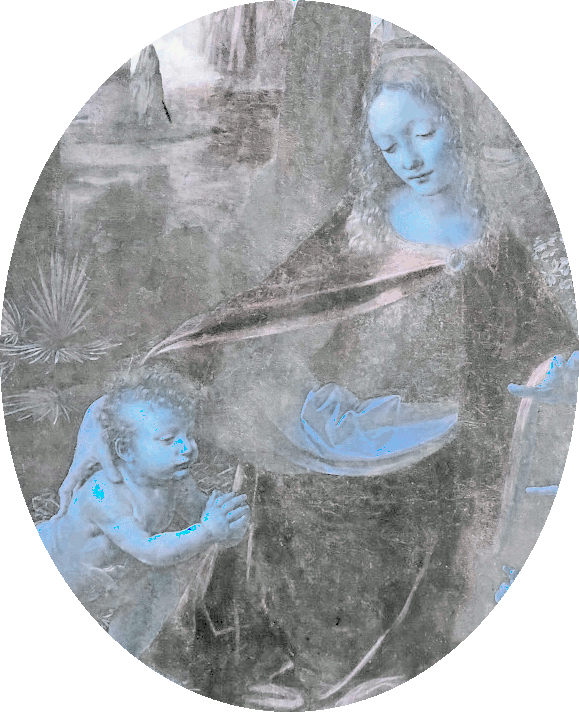
Baby in the bath water |
- Salome (Shalom 'peace') who was also known as Salome III, was a Jewish princess.
- She was the daughter of princess Herodias and Herod II, who
was the son of Herod the Great.
- Salome was granddaughter of Herod the Great, and stepdaughter of Herod Antipas.
- In Biblical literature, she is remembered as the immediate
culprit in the execution of John the Baptist.
|
At that time Herod the tetrarch heard the reports about Jesus, and he said to his attendants, “This is John the Baptist; he has risen from the dead!
That is why miraculous powers are at work in him.”
(Matthew 14:1-2) |

Crown |
-
Herod Antipas, Salome's step-father, was a tetrarch, which
is a ruler appointed by Rome.
- He ruled over Galilee which is located in northern Palestine, and Peraea, east of the Jordan River and the Dead Sea
which was under Mosaic Law.
- Herod II (27BC-34AD), who was
Salome's real father, was married to Mariamne II, the daughter of Simon Boethus the High Priest.
|
Rocks and caves were particularly associated with Mary and Joseph because they suggested sanctuary, and because of certain metaphors used to describe the Holy Family. The Virgin Mary was considered to be 'a rock cleft not by human hand'. Christ, as the Son of God, was the 'mountain hewn out of the mountain not by human hand.'
(nationalgallery.org.uk) |
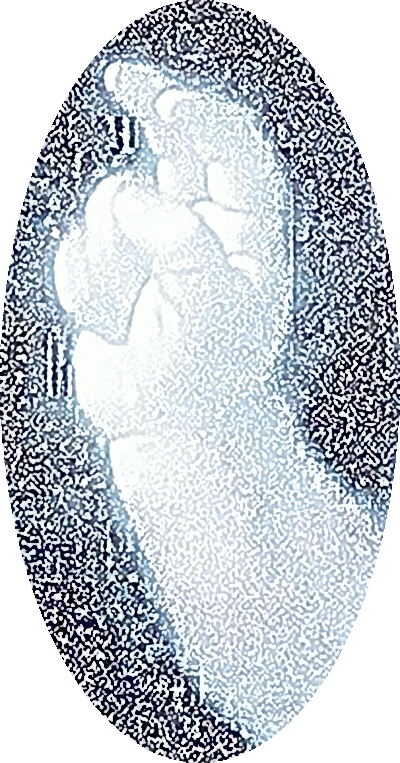
2X |
- The historian Josephus wrote that Salome was married
twice, first to the tetrarch Philip, who was a half brother of her father, Herod Philip, and a son of Herod I the Great.
- Philip died in 34 AD and she married her cousin Aristobulus, who was the son of Herod of Chalcis.
- She is not to be confused with Salome, sister of Herod I the Great.
|
King Herod heard about this, for Jesus’ name had
become well known. Some were saying, “John the Baptist has been raised from the dead, and that is why miraculous powers are at work in him.”
Others said, “He is Elijah.” And still others claimed, “He is a prophet, like one of the prophets of long ago.”
(Mark
6:14–15) |

Herod Antipas |
- According to Apostles Mark and Matthew, Herod Antipas had imprisoned John the Baptist for condemning his marriage to Herodias, the divorced wife of his half brother Herod Philip.
- John the Baptist objected to that marriage and his views were considered a political threat to
Herod Antipas.
- Herodias new husband seized John the Baptist, had him bound, and put him into a deep dungeon far within the fortress for over a year.

Herod family |
- The story can get really confusing because there were
quite a few different Herods.
- The Herodians were once Edomites who were forcibly converted into Judaism by the Hasmoneans after the Maccabean War.
- They rose their way up as tetrarchs through stealth, cunning, guile, and making deals with the Romans.

Baby Jesus |
- The Bible depicts family patriarch, King Herod the Great, as a monster who tried to kill baby Jesus and, when he couldn't find him, killed every infant in Bethlehem,
incidently, also from Gospel of Matthew.
- Although, historians today generally believe the story is fictional,
King Herod did execute one of his wives, and 3 of his children.
|
Legendary tales of a childhood meeting between Jesus and his cousin Saint John the Baptist first became popular in the 14th century. It was claimed that when King Herod ordered the Massacre of the Innocents, the Holy Family fled to Egypt and on their way met Saint John, who also escaped the massacre.
(nationalgallery.org.uk) |

Sketchy niece |
- What did John consider wrong? Herod Antipas married his half-brother's wife and she was also his niece.
- In Jewish law, a marriage to a brother's wife while he was living was considered incestuous
and the punishment for a woman in adultery was still death by stoning.
- The marriage violated Mosaic Law, but Herod Antipas was afraid to have the popular prophet killed
to silence him.
-
Herodias nursed a grudge against John and wanted to kill him.
|
For Herod himself had given orders to have John arrested, and he had him bound and put in prison. He did this because of Herodias, his brother Philip’s wife, whom he had married. For John had been saying to Herod, “It is not lawful for you to have your brother’s wife.” (Mark
6:16–18) |
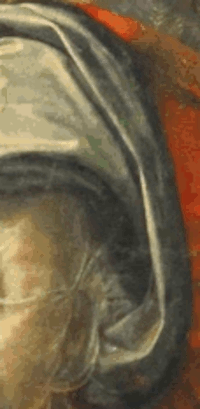
Simon the high priest |
-
Perhaps, John the Baptist felt Herodias was more to blame because she was the
granddaughter of Simon the high priest, and knew better.
- But, powerful rulers like her would not accept criticism.

John the Baptist |
-
Meanwhile, John the Baptist was
wandering around in the wilderness.
-
He looked like a wild-man with uncombed and uncut hair, wearing only camelhair clothes and a leather belt.
- John was well known for his preaching and baptizing, and
Herod Antipa feared that that spiritual influence could cause greater political unrest and possibly a messianic rebellion.
- The Jews were not in favor of being ruled by the Romans.
|
Now Herod had arrested John and bound him and put
him in prison because of Herodias, his brother
Philip’s wife, for John had been saying to him: “It is
not lawful for you to have her.” (Matthew 14:3–4) |
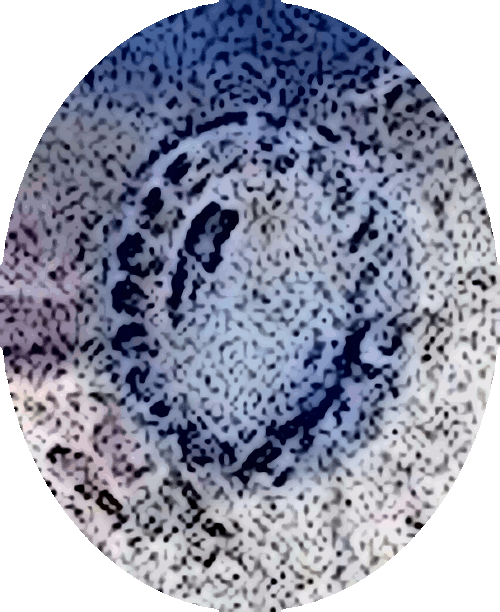
Mosaic Law trap |
- The Mosaic Law was given specifically to the nation of Israel
and consisted of three parts: the Ten Commandments, the ordinances, and the worship system, which included the priesthood, the tabernacle, the offerings, and the festivals.
- The purpose of the Mosaic Law was to place a veil over
the Israelite's eyes because they were too young to see
anything and they needed guidance.
- They didn't want to
talk to God, they wanted a king.
|
Who are Israelites; to whom pertaineth the
adoption, and the glory, and the covenants, and the
giving of the law, and the service of God, and the
promises. (Romans
9:4) |

Off with their heads |
- Mosaic Law is the Old
Covenant and every astrological age has it's own 'religion'
because as humanity progresses, the needs change.
- Which
is why Mosaic Lawyers spent all their time chasing the Age of
Taurus (the bull) around.
- No one was ever saved under the
Old Covenant, they were all guilty of being sinners.
- YHWH
accused them day and night.

New day |
- Jesus came to replace the Mosaic Law with the New
Covenant, "Love me, and love yourself and everyone else."
-
You're not under Mosaic Law if you're in Christ.
- Ask
yourself, does it make sense to believe you're a sinner under
the 10 commandments (like most Christians believe), when Jesus
died to free us from our sins?
|
Behold, I say unto you that the law is fulfilled
that was given unto Moses. "Behold, I am he that gave
the law, and I am he who covenanted with my people
Israel; therefore, the law in me is fulfilled, for I
have come to fulfil the law; therefore it hath an end"
(3 Nephi 15:4-5). |

Herodias rolls over on her back |
- Herod Antipas divorced his previous wife, Phasaelis.
- Herodias, was the wife of Herod Antipas, who was tetrarch or ruler of a minor principality in the Roman Empire.
- Herodias was married to Herod Antipas after divorcing
his half-brother, Herod Philip.
-
John the Baptist censured the couple after accusing them of
breaking Mosaic Law.
- As a result, Herodias conspired to arrange the execution of John the Baptist.
|
Leonardo once wrote that light and shade should blend 'without lines or borders in the manner of smoke', giving rise to the term sfumato, meaning 'seen as if through smoke'. The soft shadows around corners of the eyes and mouths make Leonardo's faces seem more alive because they leave a little to our imagination.
(nationalgallery.org.uk) |

Herodias
evil eye |
- Herodias, as recorded in the Gospels According to Mark and
Matthew, would have had John killed but could not because Herod
respected and feared the man.
- Because John accused the
couple, this brought the posibility of death by stoning to
Herodias so you can understand why she was so upset.
|
So Herodias nursed a grudge against John and wanted to kill him. But she was not able to, because Herod feared John and protected him, knowing him to be a righteous and holy man. When Herod heard John, he was greatly puzzled, yet he liked to listen to him. (Mark
6:19–20) |
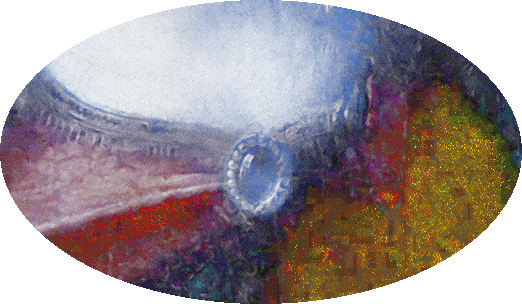
One-act tragedy |
- The original version of the play Salomé, a one-act tragedy,
was written by Oscar Wilde and was first published in French in 1893.
- An English translation was published a year later.
- The play depicts the attempted seduction of Jokanaan (John the Baptist) by Salome,
who plays a femme fatale, and her dance of the seven veils.
- It ends with the execution of Jokanaan at Salome's instigation; and her death on Herod's orders.
|
The first production was in Paris in 1896. Because the play depicted biblical characters it was banned in Britain and was not performed publicly there until 1931. (Wikipedia) |

Herod's red horse |
- Since Herod is the highest-ranking man in this narrative, in reality the power is in his hands.
- Yet, in Mark and Matthew's accounts, the women are portrayed as powerful,
as if they have the power and the control in the outcome.
|
The dangerous seductress we know derives from a heady mix of the first century historian Josephus, who named her but does not connect her with John the Baptist, and the 19th-century playwright Oscar Wilde, who wrote a scandalous play based on the character that was banned in London in 1892. Salome has now become synonymous with striptease thanks to the “dance of the seven veils”, which has no biblical basis but originated in Wilde’s play. (shilohproject.blog) |
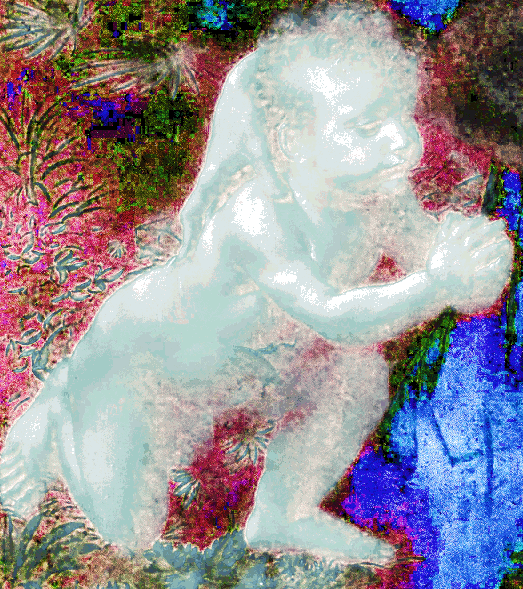
Herod was a little cherub in the story |
- And, in case you haven't noticed already, the Biblical
narrative portrays the men in a positive light as powerful,
yet hesitant of using their power against the people.
-
Plus, liking and respecting and enjoying listening to the man
he hated and wanted to kill!
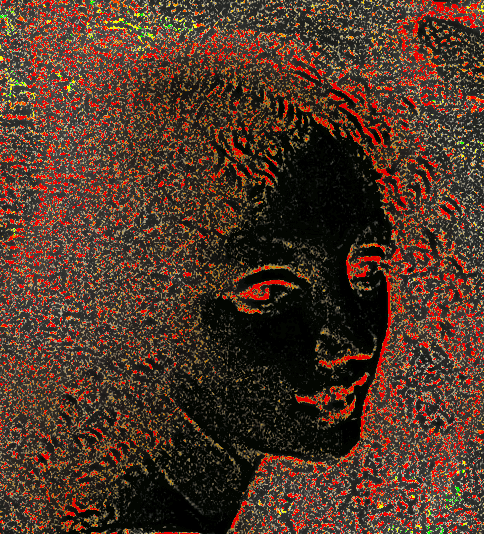
Herodias conniving and conspiring |
- The
females are portrayed negatively as vicious, catty and
conniving, conspiring all along, and responsible for everything bad that happened.
- Even though it was Herod who hated John and put him in prison
that got the whole ball rolling with his mouth.
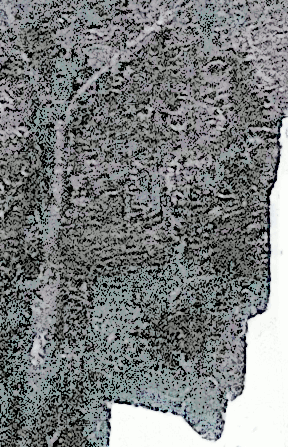
Herod Antipas partying |
- Finally the opportune time came, everything clicked into
place.
- On his birthday Herod gave a banquet for his high officials and military commanders and the leading men of Galilee.
-
A feast was prepared in Machaerus, his palace east of the Dead Sea high upon the mountains.
|
The leading men of the city gathered to eat the delicacies of the king, bird tongue, gazelle meat, pomegranates, grapes, and the fanciest desserts. Everyone wore garlands on their heads and drank never-ending vessels of wine. Music filled the air and dancers leaped across the floor. Storytellers and poets amused the guests. (Kluane Spake) |

Salome danced |
- When Salome, the daughter of Herodias came in and danced, she pleased Herod and his dinner guests.
- Salome was Herodias’s daughter by her first husband.
- It's not clear why she needed to dance at Herod's birthday
party since she automatically is disgraced and targeted by the
males as some sex object they need to rate and gossip about.
- It was very uncommon for royal young women to dance for male strangers at a party
and young girls of royalty in the fist century court were secluded from male entertainment.
- Jewish men and women celebrated these occasions separately.
|
In a society where it was considered improper for
women to mix freely in male company, it may seem
surprising that Salome should have performed in this
manner. (Morna D. Hooker) |

Highest bidder |
- It's very possible that Herod was using Salome's dance
as a marketing tool to drag in the highest bidder as she was
approaching marriage age.
- Mark
and Matthew forgot to mention that part.
- We know that
Salome eventually ended up with two husbands and the
family-owned princess was always used to increase the king's
power and wealth.
- All these 'kings' (energy vampires and
thieves) would build harems and steal all the women's power
and keep them locked down with Mosaic Law (which the kings all
ignored).
|
Since the narrative does not say who initiated Salome’s dance, it is possible Herod requested that Salome dance in return for a reward. If it was Herod’s request, it is likely to have been omitted from the narrative in order to prevent portraying Herod negatively. Since Maurice Casey argues that the role Salome filled, as dancer, is a role usually fulfilled by prostitutes or courtesans, Herod’s request would be omitted to avoid him appearing lecherous and perverse.
(Aysha Winstanley Musa) |

Performance |
-
Because there is no way to know who initiated Salome’s performance, the narrators
(Mark and Matthew) tar Salome and her mother, who supposedly benefits from the dance.
- And what comes is all the resulting negative connotations that result from a
female dancing in front of a room full of men, for their
'pleasure.'

Korasion |
- Princess Salome was about 10-13 years old and was called
'korasion' in the Quan-Tuppim, meaning a young woman
of social status not yet of marriageable age.
- The word
korasion also implies that she was the 'apple' of Herod Atipas' eye.
- In both Gospel accounts, Salome is referred to as a young girl and not a woman.
|
That Antipas would have young Salome dance at a men's party, shows an ambiguous desire for Salome. Did Herod Antipas have an incestuous desire for his step-daughter?
We know that Antipas had a sordid life. (Kluane Spake) |
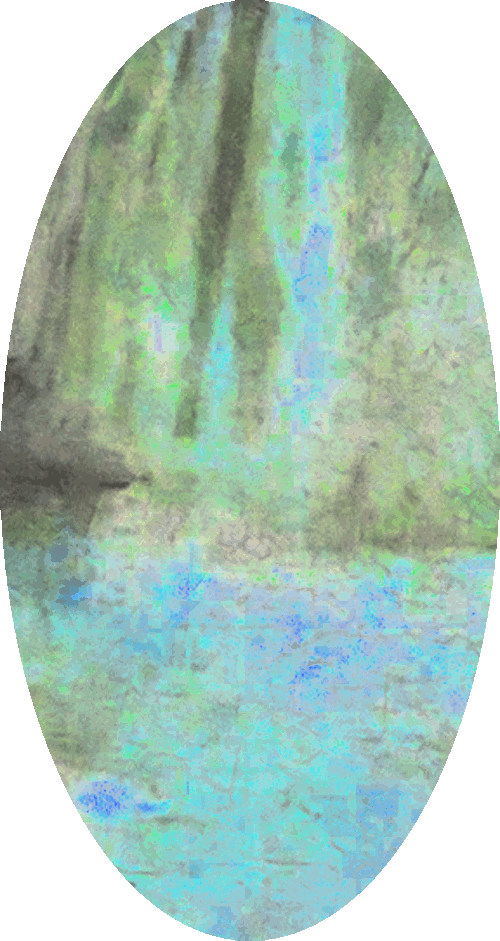
Paradise |
- After Salome danced before Herod and his guests, he promised to give her whatever she asked.
-
Why did Herodias allow her daughter to dance in front of strangers?
- Prompted by her mother, Herodias, who was infuriated by John’s condemnation of her marriage, the girl demanded the head of John the Baptist on a platter.
- The unwilling Herod was forced by his oath to have John beheaded.
|
The king said to the girl, “Ask me for anything you want, and I’ll give it to you.” And he promised her with an oath, “Whatever you ask I will give you, up to half my kingdom.”
She went out and said to her mother, “What shall I ask for?”
“The head of John the Baptist,” she answered. (Mark
6:21–24) |

Herod scratching bac-ks (Bacchus) |
- Salome next becomes the victim of Herod's lust,
something
so powerful he made oaths and promised her half his kingdom
(couldn't control himself).
- A man who was supposed to be
acting out the role of her 'father' is just a lecherous fool.
- Which she never took him up on, period! although she could
have if she had been gold digging, but really in reality, it
sounded like she was about 12 years old.
- But because she
was dancing, all the men naturally thought she was a gold
digger and she was somehow coming after all of them?
|
Neither at things, nor at people should one look. Only in mirrors should one look, for mirrors do but show us masks.
(Oscar Wilde, Salome) |
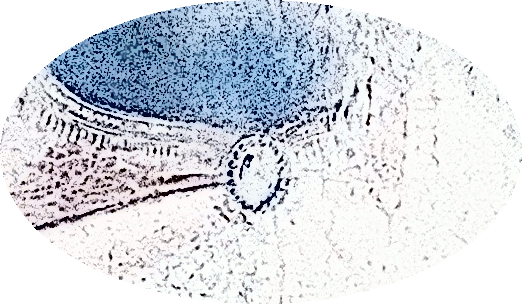
Wrapped in veils |
- More than likely,
the reason she was dancing with veils was because the men told
her to cover herself up, or she would be guilty of them raping
her.
- She might also get stuck with him for life under
Mosaic Law if he
raped her.
- Women's 'power' is considered their femininity
which is marked as dangerous or bad.
- Not only are Herod and John constructed as being helpless to the manipulation of women, they are also helpless to the women’s sexual charms.
|
Blaming the women for a man’s sin is as old as the Bible. (sojo.net) |

Under water and stepped on |
- Salome is depicted by Christian traditions as an icon of
dangerous female temptresses and in the ancient world, women were often framed as sexual beings that lead men astray.
- Presenting women as having this power over men results in a lack of responsibility on men’s part for their actions.
- Men’s accountability is removed because they portray themselves as helpless
victims to women.
- This removes them from any consequences and instead, they
demonize and pass blame to women.
|
This is evident in ancient texts such as Sirach and the Dead Sea Scrolls, which say, “When you see a good-looking woman, look the other way… men have been led astray by a woman’s beauty… Don’t sit down to eat with another man’s wife or join her for a drink. You may give in to the temptation of her charms
and be destroyed by your passion. (sheffieldgenderhistory.hcommons.org) |

Muscle man macho |
- Construction of gender in this Biblical story is the method of naming
and maming the characters.
- Herod is called King on a number of occasions even
though he is not a king; he is the tetrarch of Galilee, a
small state, certainly not a nation.
- A small state that
was considered the least significant in Judea.
- Naming him as King elevates him to a position higher than his true rank.
- He creates orders and men are called to jobs and he's
rich and owns the wallet.
|
Mark’s account states that Herod “protected” the Baptist from Herodias , indicating that it was not Herod’s wish to see the Baptist dead. Herod is thus presented positively. He is a protector and presented as an ally of John’s, whereas Herodias is narrated as having “a grudge” against the Baptist and being in direct opposition to him. (sheffieldgenderhistory.hcommons.org) |
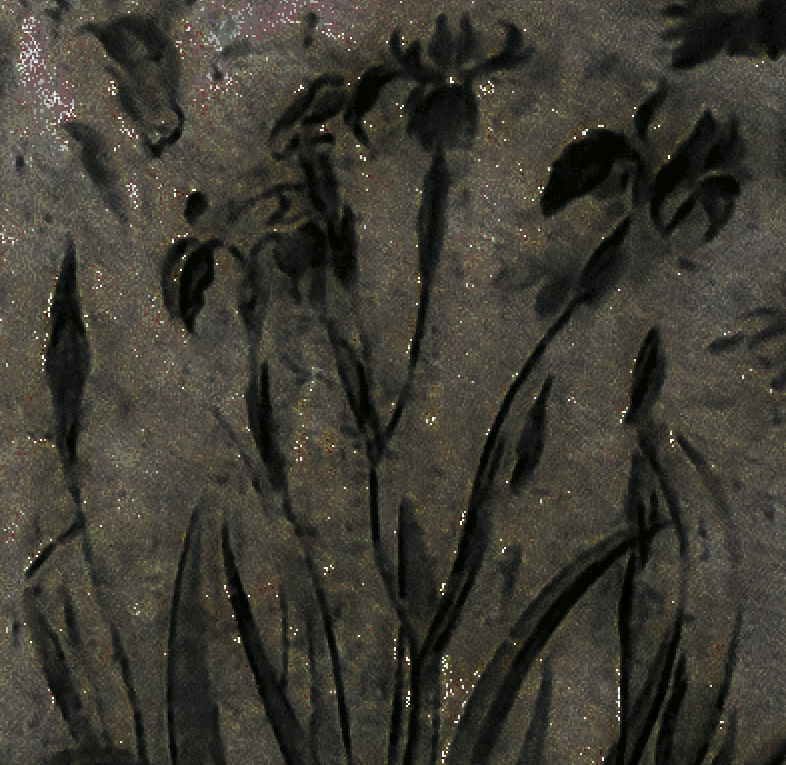
Black Dahlia |
- The same cannot be said for the females, Herodias, is not elevated alongside
Herod as Queen, nor is her daughter named as a princess.
-
Mostly, Salome is not named, but referred to as the daughter
and even 'girl,' and her mother is labeled as wife or mother.
- At the beginning of the story, it's not even clear which
Herod she is even married to; throwing doubt her 2nd husband
even wants to claim her.
|
Flowers in paintings of the Virgin Mary also have
a special significance. The clump of flowers at the
bottom left of the painting are Star of Bethlehems, or
heartsease - a symbol of purity and atonement. Palm
leaves, seen behind the infant John's head, are an
emblem of the Virgin Mary and a symbol of victory.
(nationalgallery.org.uk) |
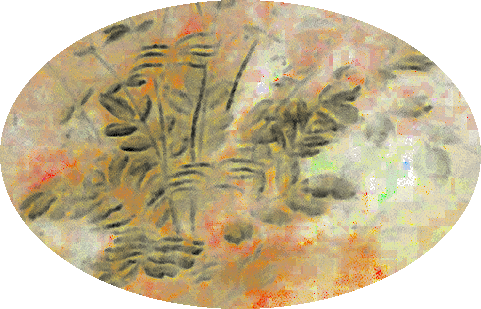
The king with no clothes on |
- The female's status is
reduced, while Herod's is constantly elevated.
- Both
females just hang around in the background conniving and
conspiring supposedly, no real purpose, except to serve the
man (knowing that his concubines could wander by at any time
and distract him again).
|
The degree of influence that they had in the execution of John the Baptist, therefore, may have been deliberately constructed to convey the dangers of womanly influence and unorthodox behavior. It is more historically accurate to place a pragmatic, political responsibility on Antipas for John's execution. Despite this, his wife and stepdaughter have shouldered the blame for the first-century prophet's gruesome end. Why has the historicity been largely disregarded? (Jennifer Lassley
Knight) |

Orders for a head chopper and platter |
- Herod Antipas immediately sent an executioner to the prison in
the wilderness with orders to
bring John’s head back to him.
- The man went, beheaded John in the
prison, and brought back his head on a silver platter with
blood streaming down his beard.
- So John died on Herod
Antipas' birthday that year approximately 29 AD.
|
Despite Herod’s major role in the Baptist’s death, Herod is framed as a protector and reluctant murderer; he is absolved by the narrator. She is framed as a devious woman waiting for “the opportune time” to kill the Baptist, since he opposed her marriage to Herod.
(sheffieldgenderhistory.hcommons.org) |
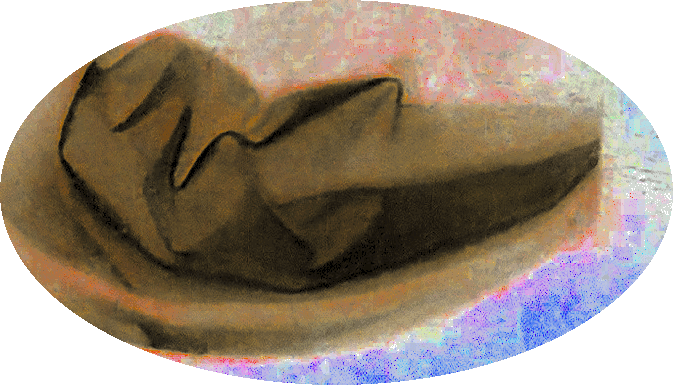
Platter with John's head |
- Salome took the platter with John’s dreadlocked head and gave it to her mother.
-
A platter is a large plate used especially for serving meat.
- It can also refer to a phonograph record which is a a flat circular plate used for recording and playing back sound
or acoustic signals.
- One of possibly many disks on which data is stored in a mechanical hard drive.
- A platter can also be
someone who plats/plaits or braids (usually their hair).
- 'On a
platter' means without effort or very easily.
|
The wheel is come full circle: I am here. (Shakespeare,
King Lear) |
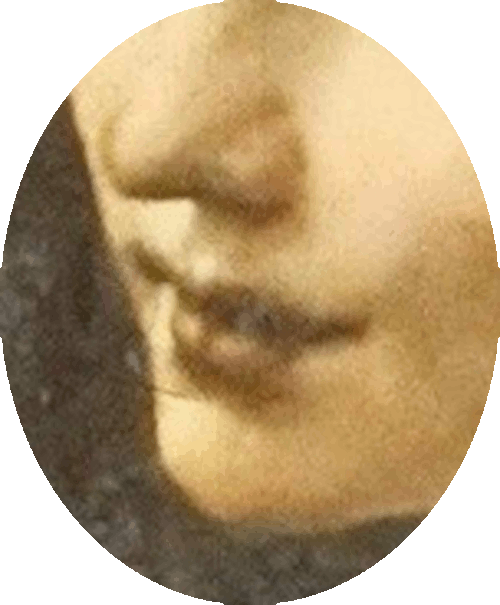
|
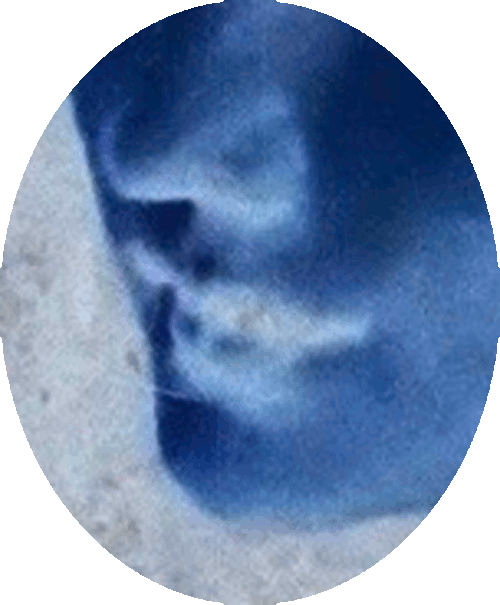 |
|
Turned into a vamp |
- Salome was a one-act opera written by Richard Strauss and
first produced in 1905.
- Herod was portrayed as lusting after Salome, while Salome, in her turn, desires John the Baptist.
- She finally satisfies her corrupt wishes by kissing the lips of the severed head of John, who had spurned her.
- A complete new story
and pretty racy.
|
Herod wanted to kill John, but he was afraid of the people, because they considered John a prophet.
(Matthew 14:5) |
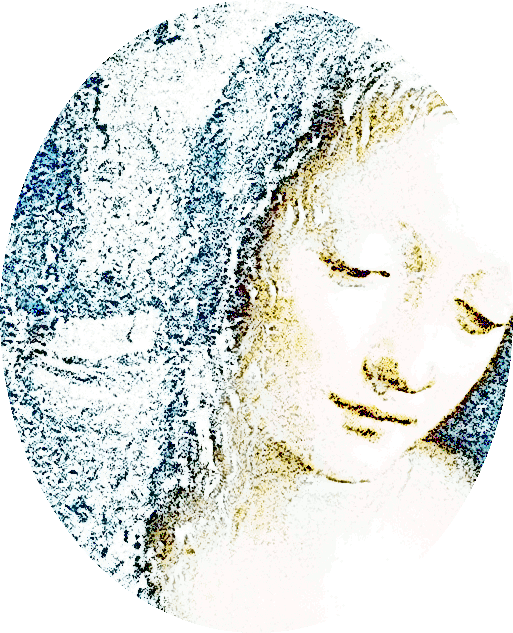
Salome veil |
- As a result of the Strauss opera in 1905, Salome became an erotic symbol in art.
- It is likely that it is her provocative 'Dance of the Seven Veils' in the opera that most people connect with her name, although no such
'veil' dance is mentioned in the Bible.
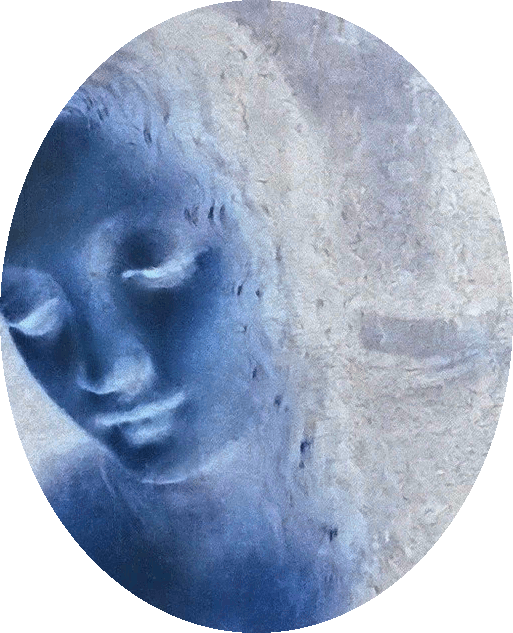
Finally all wet |
- Poor Salome is totally rooked into the deal by the
narrators of the story because it was never her idea, but
Herod's and Herodias' instead.
- For example, Salome does not simply pass on her mother’s request for
the head of John the Baptist, but rather embellishes and asks for the Baptist’s head
'on a platter' in a excited and 'hurried' request.
|
Despite the Baptist’s death being Herodias’s desire, which comes about due to her suggestion to Salome, the narrator frames the request as Salome’s. Salome is said to have “hurried in to the king with the request.” Her eagerness is clear although unexplained. (Aysha Winstanley Musa) |
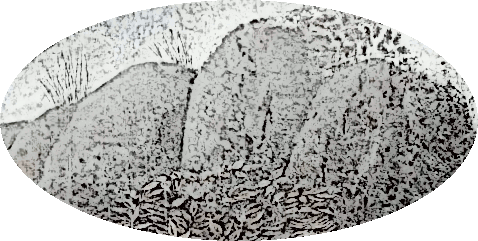
Rock yard |
- Salome who could easily be viewed as Herodias’s pawn, is framed as a partner in Herodias’s crime,
as if she is voicing her own thoughts in the request.
- And
the fact that she so emphatically demands the head, 'now' like
she had so much power and planning in the event.
-
It all reads like a man's 'romance novel' of the week about
how bad the female is.
- They say women gossip but notice
that men always end up on the same story line (always
involving lust) and their rating and ranking systems.
|
Herodias achieved retribution against John, one of the few instances of women exercising significant power in the Bible. The circumstances under which Herodias and Salome appear in the Christian Testament have consequently framed their portrait, which church tradition has preserved as an example of sinful, deviant, and heretical behavior. Like many women in the Bible, Herodias and Salome have fallen prey to androcentric symbolism of the heretical woman, a literary topos to justify male superiority. (Jennifer Lassley
Knight) |
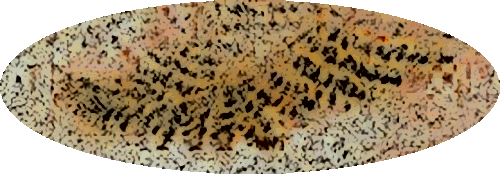
Low brow vamp |
- Even worse, with Salome make the request, Herodias
remained behind the scenes, which makes her appear
manipulative, devious and sly.
- The readers are left feeling like she sent her daughter to do her dirty work.
- Herodias’s underhanded nature is presented through the narrator’s insight that for Herodias
'finally the opportune time came.'
- This indicates that
Herodias’s request for the Baptist’s death is premeditated
which is fairly ludicrous seeing as Herod is the one who
quickly called for the head chopper.
|
It is now possible for the heretic to learn, and the Jew as well, what he ought to know already, the reason for the Jews' errors: for from the Jew the heretic has accepted guidance in this discussion, the blind borrowing from the blind, and has fallen into the same ditch... Let the heretic now give up borrowing poison from the Jew--the asp, as they say, from the viper. (Jennifer Lassley
Knight) |
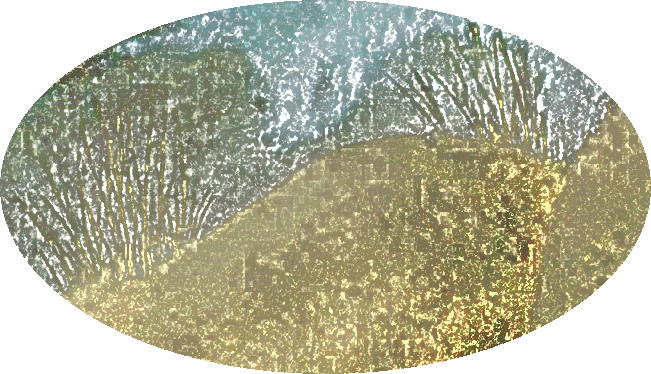
Desert |
- There is also the possibility that Herodias was an
immoral or dangerous woman, as historian Josephus indicated.
- However, seeing as just the entire Bible is composed in this
anti-feminine rhetoric, it's hard for anyone to make such a
claim as just about all women were portrayed as dirty and
somehow bad.
- Remember, men were not even allowed to talk
to them on the street and they certainly didn't allow them to
join their secret cults.
|
The construction of Salome and her request coupled with Herodias’s behind the scenes manipulations and premeditated murder removes all innocence from the women. They are framed as manipulative murderers, working in unison, in opposition to the helpless men, Herod and John. (Aysha Winstanley Musa) |
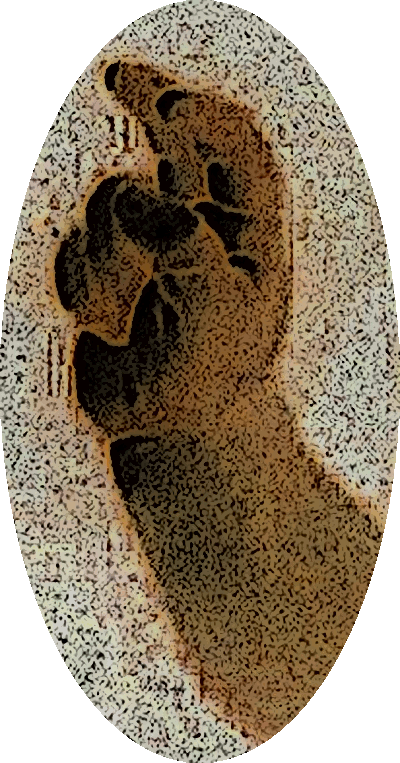
Oath |
- Often oaths and vows were made in God’s name which is
why the Bible makes a point of the importance of not going
back on an oath.
- Once again, Herod is presented positively since he stands by his oath despite not wanting to fulfil it.
- And really, it was an idiotic oath from the beginning
with no constructive purpose (except fawning all over
himself).
|
Whatever your lips utter you must be sure to do, because you made your vow freely to the Lord your God with your own mouth. (Deuteronomy
23:23) |

Oath maker |
- Herod Antipas is presented as a man who has fallen victim to the wickedness and manipulation of women,
however, his word to God is somehow valiant, noble and good.
- Plus, just the fact that he made this oath to pretend what
he was doing was somehow legitimate and chivalrous.
- Herod’s oath is worth further attention as he is potentially unable to fulfil the oath he makes since it is not within his power.
- He is not a king, but a tetrarch and under Roman rule; and therefore cannot give away any land, certainly not half of it.
|
The similarities between the Esther story and the Baptist’s beheading, coupled with the fact that Herod does not have the power to fulfil his oath, indicates that Mark’s account is not historically true, but a constructed narrative. (Aysha Winstanley Musa) |

John's head wrapped in a burial shroud
|
-
On hearing of this, John’s disciples came and took his body and laid it in a tomb.
- Then they went and told Jesus what had transpired.
-
This is the pivotal point in history where the ministry of Jesus became more visible.
- John was the last Old Testament prophet and the story marks the beginning of what would be the New Covenant and the coming Kingdom of God.
|
On Herod’s birthday the daughter of Herodias danced for the guests and pleased Herod so much that he promised with an oath to give her whatever she asked. Prompted by her mother, she said, “Give me here on a platter the head of John the Baptist.” The king was distressed, but because of his oaths and his dinner guests, he ordered that her request be granted
and had John beheaded in the prison. His head was brought in on a platter and given to the girl, who carried it to her mother. John’s disciples came and took his body and buried it. Then they went and told Jesus. (Matthew
14:6–12) |

Storm tossed |
- It has been suggested that the early Christians did not want
anyone to know that they had lost two of their greatest leaders, Jesus and John, to Roman powers because of the political threat they posed.
- Making it plausible that the death of John the Baptist was re-written in a manner where the Baptist was killed because of his disagreement with the union of Herod and his brother’s wife, Herodias.
- Thus removing the threat posed by the early Christians, preventing them from being targeted as political revolutionaries and potential rebels.
|
Therefore, by blaming Herodias and Salome, the Baptist’s death was reframed as Herodias’s vendetta and as a result, John’s death loses its potential political charge. (Aysha Winstanley Musa) |

Vulture |
- Further evidence that Mark’s account is not historical are the differences between
his account and the other three Gospels.
- The story is not even mentioned in the Book of Luke.
- Josephus corroborates that Herod disliked the Baptist, saying that Herod was ruthless towards John.
- Also, Josephus wrote that Herod had the Baptist killed
because he was a political threat
and this perspective is also found in the Gospel of Matthew.
- In Matthew, Herod had the Baptist killed, not because
Herodias was bitter towards him, but because the Baptist had many followers
and Herod feared an uprising.
|
Herod wanted to kill John, but he was afraid of the people, because they considered John a prophet. (Matthew
14:5) |
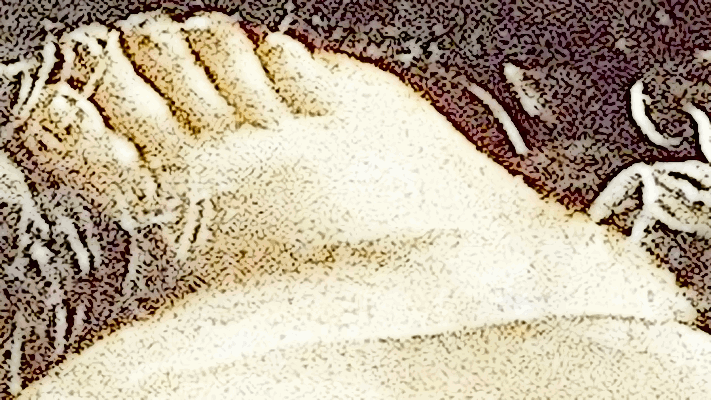
Squatter |
- Much of the Gospel of Mark and Matthew do not make sense
because they seem to reveal that the men are portrayed as morally superior, but
somehow easily manipulated by women who they conveniently
blame.
-
Rather, it is a constructed retelling which was taken from the
story of Esther, one that uses gender to mask the true motivation behind John’s death.
- Whereas Josephus’ account focused on the political motives that brought about the Baptist’s death, Mark’s account emphases personal motives and downplays politics.
|
Herod Antipas feared the growing influence of John the Baptist among the population and so he executed him Josephus wrote. The Bible, on the other hand, tells a far more elaborate tale, claiming that Herod Antipas had John the Baptist executed in exchange for a dance. (livescience.com) |
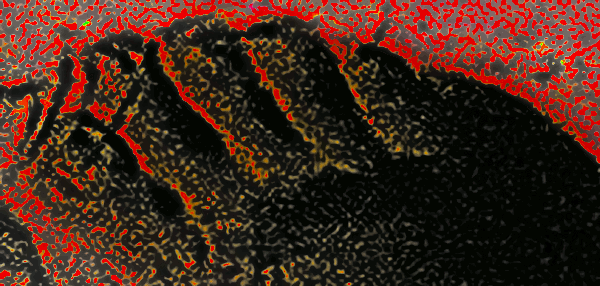
Walk on coals |
-
The murder of John the Baptist further alienated Herod from his subjects.
|
Amazingly, a little less than three years later, Herod Antipas and Herodias go to Jerusalem for the Feast of Passover, on the very day that Jesus appeared before him accused of crimes. Herod asked Jesus to perform a miracle for his own amusement. Jesus refused. Then, Herod sent him back to Pilate, who had the authority to have Jesus crucified. (Kluane Spake) |

Defeated |
- Meanwhile, Herod Antipas' first wife had returned home to her father King Aretas.
- The avenging Aretas subsequently went to war against
Herod Antipas and totally defeated and humiliated him.
- Herodias still wanted her crown and urged him to go to Rome and petition Emperor Caligula to crown him.
- But, Herodias has a brother named Herod Agrippa I who accused Antipas of sedition.
- Caligula banished Herod Antipas to Gaul, where he soon died.
- Not long after, Salome married her uncle Aristobulus, who was the brother of
Herod Agrippa.
|
After the murder of St John, the Baptist, Herod continued to govern for a certain time. Pontius Pilate, governor of Judea, later sent Jesus Christ to him, Whom he mocked.
(Luke 23:7-12) |
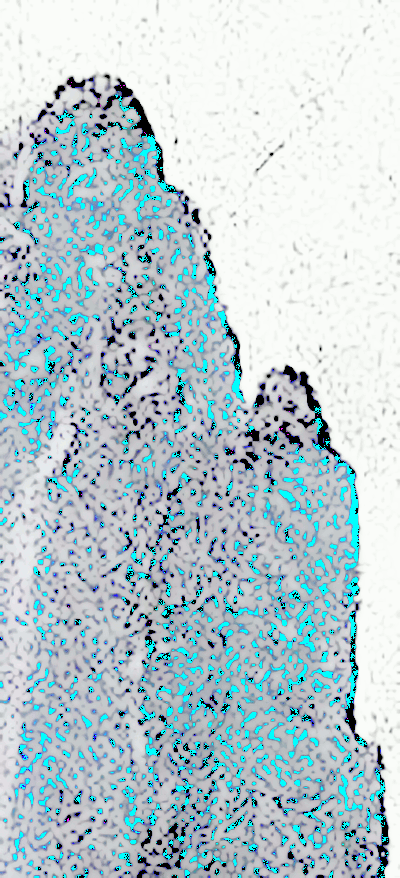
Conspiracy and fiction |
- Salome's story was greatly enlarged in the 19th century and
modern day writers turned the story into porn.
- There are
also so many details in the story we don't know about.
-
Did the entire royal family conspire beforehand?
|
For centuries, poets, artists, and the songs have expanded the myth about how Salome was evil. Surprisingly, women in the Bible are often made out to be a seductress, a nymph, a temptress, or a seducer — even though there is no Biblical text to support any of these accusations.What we learn: Doing evil can sometimes improve our present status — but there are powerful eternal consequences. (Dr. Kluane Spake) |

Making waves |
- Getting back to John the Baptist's goal in going after
Herod Antipas, it really makes no sense, which is even more of
a reason to suspect it was pulp fiction from the start.
-
He set himself up to get his head chopped off?
- There were
so many more worthy problems to attack, such as high taxes,
but he chose this marriage?
- Especially at a time when the
New Covenant, that removes Christians from the power of Mosaic
Law, was taking over Christianity.
- On top of that,
everyone already knew how vile and corrupt Herod Antipas was.
|
Controlling where people can stick their willies is something the Church (and most religions to be fair) have been obsessing for the past 2000 years, ans still are. Much more than the fairness of taxes (give to Caesar what is Caesar's). So I'm absolutely not surprised the Church liked this story. (yusso) |

Wildman John |
- One thing is known, it was time for John the Baptist to
leave.
- He wasn't walking with Paul on the road to
Damascus.
- It's possible that the story of Salome was a
way for the Biblical authors to move John out of the way, all
the while blaming females for his demise, which was one of
their favorite tactics.
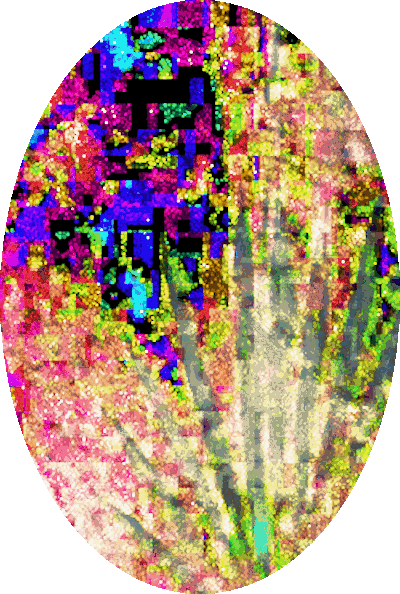
Flowers for the ladies |
- Nevertheless, the King of Kings arrived on the scene with
the New Covenant and it was time for John to put the Old
Covenant down.
Moral of the story!
- John the Baptist condemned Herod Antipas and
Herodias for not following Moses Law (Mosaic).
- This made Herod so mad he wanted to kill John.
- It also made his second wife Herodias angry and
she wanted to stick up for her husband and knock off
John somehow.
- Salome was the brainwashed daughter who thought
she was doing the right thing, but all she had was bad
influences.
- Meanwhile, the stagewriter's all turned sassy
Salome
into an exotic pole dancer, John's seductress, and
spurned woman.
- So Herod was forced to follow his own stupid
oath and chop off John's head apparently.
-
Then everyone blamed Salome and turned her into a
prostitute.
- And then Jesus brought the New Covenant and got
rid of Mosaic Law right away.
|
|
|

